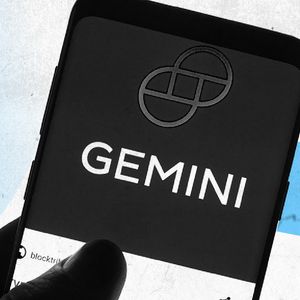Arbitrum’s Quiet Resurgence: Why the Headlines Might Be Getting It Wrong
5 min read
Headlines of late have called into question the momentum of Arbitrum , with some suggesting that it may be fading. They point to user numbers that are down and to a not-yet boom in hype following the release of Arbitrum’s token in March. But digging a little deeper into the data does Arbitrum no disservice, and it may actually portray a development that is healthier and more sustainable than some had imagined. In several regards, Arbitrum’s ecosystem is up and running, reactivating many users long thought dormant, and showing way more resilience than previously accounted for. Even though people may say that Arbitrum is losing momentum, the most recent figures indicate that the market still has a strong belief in the chain’s infrastructure—and in the way it’s set up to function, particularly as trends in Layer 2 adoption continue to evolve in 2025. TVL Rises, Led by Stablecoins and Lending A blockchain network’s total value locked (TVL) is one of the clearest indicators of confidence in it, and in Arbitrum’s case, that number is not just holding steady; it’s climbing. In May, Arbitrum saw an uptick in TVL that was much more pronounced than that of some of its peers, and it appeared to include some components that weren’t just bridges back to Ethereum. In particular, we noted stablecoins. Examining the makeup of the total value locked reveals that USDC, issued by Circle, dominates it. USDC accounts for around 64% of the total locked value, while USDT holds 18%. Only 8% comes from assets that Arbitrum users have staked—in other words, from assets that could be considered as capital that the Arbitrum ecosystem has at its disposal. The second-biggest TVL category consists of lending platforms, and stablecoins follow. Aave, a veteran in the DeFi space, is in the lead on Arbitrum with around $700 million in active loans on the network. The company appears to enjoy continued strength, a status that offers familiar yield-generation opportunities for users, which is a big reason why they stay engaged with the Aave protocol. Even in the relatively quiet markets of late summer and early fall, Aave produces something much closer to a normal revenue capacity than its competitors do. Newer entrants like 0xFluid are interestingly beginning to carve out a niche. With competitive borrowing and lending APRs, 0xFluid is expected to see an increasing user migration if its rates and services continue to outperform those of incumbents. Its growing presence in both lending and trading points to the kind of ecosystem diversification that encourages long-term participation. DEX Activity Holds Steady as Apps Mature Although DEX trading volumes on Arbitrum dipped marginally from late 2023 to early 2024, they rebounded in May 2024 to bring us unmistakable signals of life and vitality—definitely not signs of a dead market. Overall, we see steady, even growing, engagement in DEX trading on Arbitrum. For trading on DEXs in general, and for trading on DEXs on Arbitrum in particular, this has to be seen as good news. Uniswap continues to dominate the decentralized exchange space on Arbitrum, with V3 serving as the main engine for swapping tokens. User adoption of the recently launched V4 seems promising, and it might help to increase overall user activity across the Uniswap platform. Acknowledged again, 0xFluid is prominent. Almost like lending, it has begun to capture the scene in DEXs (decentralized exchanges), slowly gaining ground as an alternative. This is a broader trend in the Arbitrum ecosystem. Established platforms hold their ground while healthy competition between promising newcomers draws fresh liquidity and users. User Growth Signals a Turnaround The most hotly contested measure in Arbitrum’s recent past surely has been the number of monthly active users (MAUs). For several months, that number was declining, clearly on a path toward zero. The “losing favor” narrative was getting reinforced with every tick down, because it is definitely not a good omen when the number of active users is going pin downward like that. ” @Arbitrum is losing steam” – that’s what the headlines say. But dig into the recent data and you’ll find a different story. May brought some interesting developments that might change the narrative entirely for $ARB pic.twitter.com/ltv718h8jg — The Learning Pill (@thelearningpill) June 2, 2025 But then we had this reversal. In May, the number of active users climbed up past 1 million. No clear storyline is emerging yet for this recovery. We see this uptick coinciding with Kaito’s liquidity bootstrapping initiative—which has begun to onboard a new wave of users. This uptick seems to be a direct effect of the initiative and not something that is happening in parallel or in some other linked way. It’s still very early, but this could be the start of a broader reactivation cycle. One of Arbitrum’s main decentralized exchanges in terms of user base seems to be undergoing a renaissance. GMX is now helping to push the Arbitrum MAU figure higher. Its rise seems to be affecting the overall DEX user figure nicely, seeming to point up to user growth in the Arbitrum DeFi ecosystem. Other DEXs with decent user figures that seem well on their way to maintaining those user figures include Camelot, PancakeSwap, and Kyber Network. Final Thoughts While headlines might indicate a slowdown, the data tells a different story. Arbitrum isn’t collapsing; it’s not even retracing. With a figure on the rise called total value locked (TVL), the lending markets diversifying, and a subtle upswing in user activity, the chain is set for a new growth phase. Aave and Uniswap, established players in the DeFi space, continue to anchor the ecosystem; meanwhile, fresh projects like 0xFluid are contributing competition and innovation. With Kaito supposedly opening the door to a whole new bunch of users, Arbitrum seems to be set up for a strong 2025. While the figures might not be mind-boggling at this early stage, they are definitely trending upwards. Maintaining a close watch on MAUs is advisable—they could serve as an authentic metric for determining L2 dominance in 2023. Disclosure: This is not trading or investment advice. Always do your research before buying any cryptocurrency or investing in any services. Follow us on Twitter @nulltxnews to stay updated with the latest Crypto, NFT, AI, Cybersecurity, Distributed Computing, and Metaverse news !

Source: NullTx



